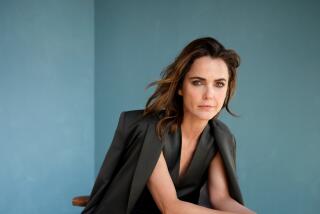âThe Final Yearâ captures the closing stretch of Obamaâs presidency â and the rise of a new order
In âThe Final Year,â filmmaker Greg Barker rides shotgun with the principals of then-President Obamaâs foreign policy team as they hopscotch the globe in the waning days of his administration. The director intended to make a campaign film like âThe War Room,â which followed Bill Clintonâs rise to the White House, âbut in reverse,â he said, to capture the emotion and drama inside a presidency that was rushing to the finish line.
Then his paean to policy-making got a startling third-act twist: Donald Trump.
âIâve never had a film where the experience of watching it is so changed by the mood or politics of the moment,â said Barker, whose narrative chugs toward election night like a freight train headed for a cliff. Yet if the goal is to expose the human dimensions of statecraft, the film succeeds with poignancy. After their years of effort in Obamaâs second term, these fervent public servants are heartbroken in the closing stretch.
The camera witnesses a teary-eyed Ben Rhodes, the high-profile Obama speechwriter and national security advisor, with his head in his hands. Samantha Power, the U.N. ambassador, struggles to keep her composure as spirits deflate at an election party with Madeleine Albright and Gloria Steinem.
In a bittersweet turn, what seems catastrophic for the Obama legacy that the filmâs subjects so vigorously worked to secure gives âThe Final Yearâ unexpected gravitas.
âIf Hillary [Clinton] had won, the film would be seen more as about the craft of diplomacy, the art of pushing water uphill,â said Power, a former Obama advisor who served at the U.N. during his second term. âBy virtue of the changes that have occurred, it does cast more light than I think we were aware on the substance of what we were trying to do.â
The film follows Power, Rhodes and Secretary of State John Kerry, with appearances by Susan Rice, the national security advisor, and Obama, as they advance â and sometimes stall â on several fronts, including a nuclear deal with Iran, the struggle to resolve conflict in Syria and the warming of relations with Cuba. Barker and his crew were in constant motion, whether tracking Obamaâs historic visits to Laos and Hiroshima or hopping on a ship with Kerry in Greenland to witness the effects of climate change.
âWe were in that bubble,â said Barker, who traveled to 21 countries in three months.
Power, who was acquainted with Barker through his previous work, could appreciate his mission, having once been an observer of government as well. âPeople on the outside really donât know what itâs like on the inside,â she said. âWhat compelled me was the way Greg talked about his aspirations for the film.â As American faith in government plummets, there was hope that âmore exposure would breed more respect,â Power said. âNot because we had all the right answers, or we were going to look like a well-oiled machine, but because people were trying so damn hard.â
The ambassador, a scholar and former war journalist who won a 2003 Pulitzer Prize for a study on genocide, also opens the door into her life away from the global stage. Power decided it was important to include her role as a working mother. âIt was OK to show the inelegance of the juggle ⌠having those cameras around when youâre putting your kids to bed at night.â
Private and professional life dovetail when the diplomat gives a passionate speech at her nannyâs naturalization ceremony. âIn a million years, I wasnât thinking about a new administration potentially coming in and deporting people, collecting social media data from new immigrants or having a Muslim ban,â she said.
As he filmed breaking news events, Barker had an advantage over the network and cable reporters who often also were present. He was free from the constant reactive demands of a 24-hour news cycle. Because the documentary would be released a year after the events, it gave its subjects the blessing of posterity. âThereâs stuff you can say,â Power said, âand youâre a little more liberated.â
Given the new presidentâs efforts to undo many of Obamaâs signature foreign policy accomplishments, âThe Final Yearâ may not only induce nostalgia for a suddenly bygone moment but also serve as a kind of counterpoint.
âI think people are watching the film and playing the contemporary narrative in their mind at the same time,â Barker said. âIt will be interesting for people who didnât like President Obama, as well. Iâm very curious to take this out into the wider world and see how it plays.â
See the most read stories this hour Âť
ALSO
WATCH: Video Q&Aâs from this seasonâs hottest contenders
Filmmakers Agnes Varda and JR turn to the common man to find heroes in âFaces Placesâ
The return of Jane Goodall, climate change and Syria among Oscar documentary hopefuls
More to Read
From the Oscars to the Emmys.
Get the Envelope newsletter for exclusive awards season coverage, behind-the-scenes stories from the Envelope podcast and columnist Glenn Whippâs must-read analysis.
You may occasionally receive promotional content from the Los Angeles Times.










